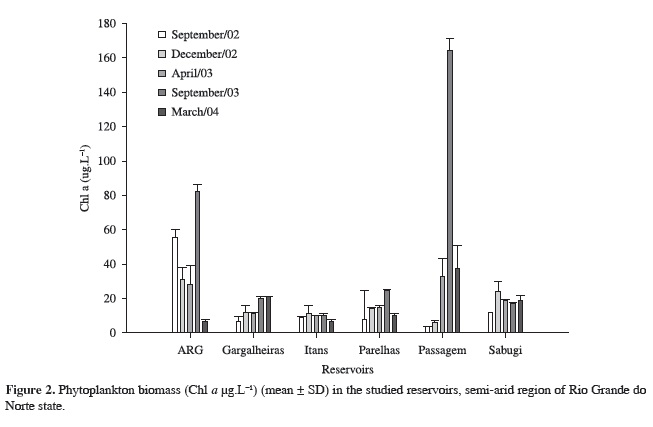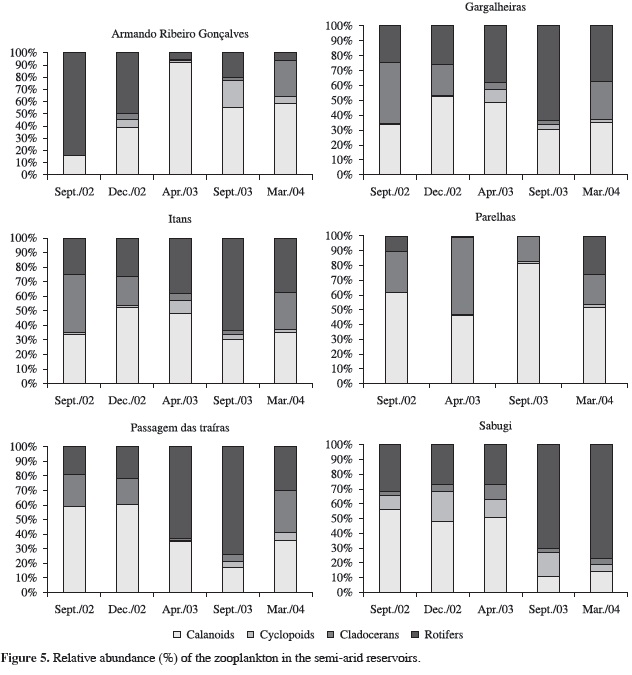Species composition, density, and temporal dynamics of zooplankton were studied in six reservoirs in a semi-arid region in tropical northeastern Brazil (Rio Grande do Norte state). All the reservoirs are highly eutrophic, with high contents of total nitrogen (minimum of 1200 µg.L-1) and total phosphorus (minimum of 10 µg.L-1), and extremely high algal biomass was registered (surpassing 20 µg Chl a.L-1). All the reservoirs showed an enduring condition of high turbidity and phytoplankton assemblages dominated by cyanobacteria. Zooplankton also showed quantitative patterns suggestive of eutrophic conditions, expressed by high densities, mainly in Passagem das Traíras and Sabugi reservoirs. A spatial differentiation in the composition of the zooplankton community was registered. Rotifers (especially Keratella tropica, Brachionus havanensis, and Keratella americana) were the dominant forms in the zooplankton community of Itans, Passagem das Traíras, and Sabugi reservoirs, while calanoid copepods (mainly Notodiaptomus cearensis) dominated in the Armando Ribeiro, Gargalheiras, and Parelhas systems. The existence of novel relationships in zooplankton community composition in eutrophic reservoirs in this tropical semi-arid region must be considered in designating zooplankton indicators of eutrophic conditions.
reservoirs; semi-arid; zooplankton; eutrophication








